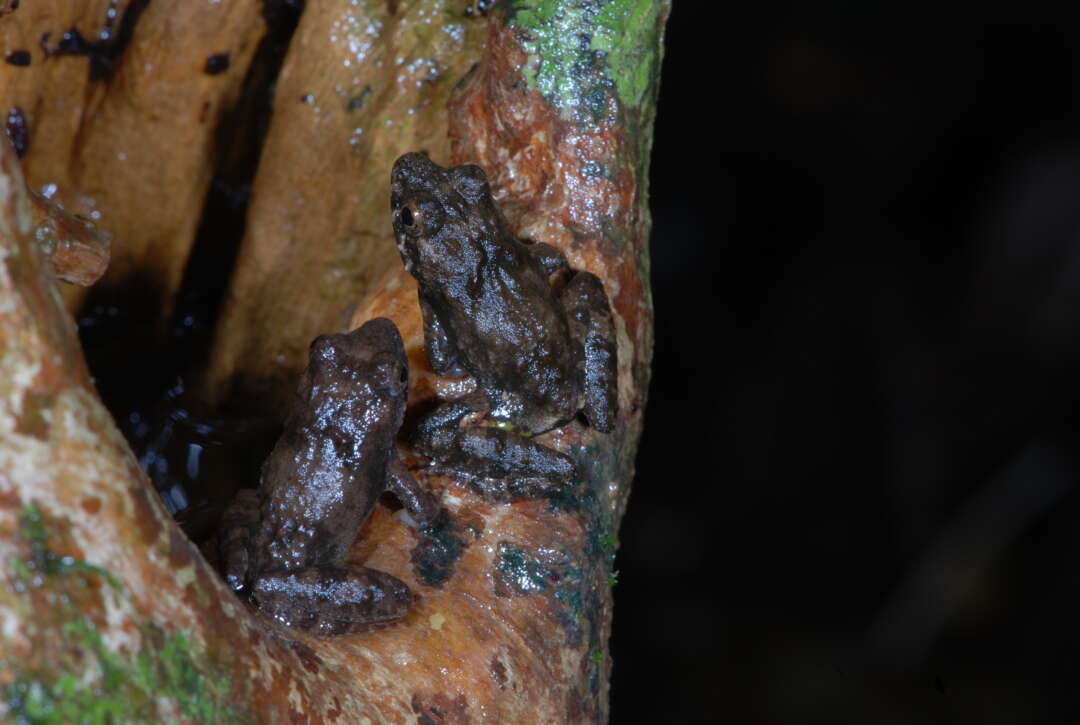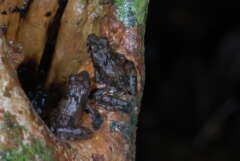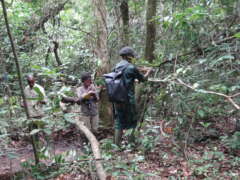Sensitive Frogs: The Rainforest Heals More Slowly Than Previously Assumed
Berlin/Dresden, 10/13/2021. Scientists from two Leibniz institutions, the Senckenberg Natural History Collections in Dresden and the Museum of Natural History in Berlin, completed a long-term study of biodiversity in the rainforest over a period of more than twenty years. Using frog communities in the Ivory Coast region of West Africa as an example, the team was able to show that the ecosystem has still not recovered almost 50 years after deforestation. Some frog species never return to their original habitat. The study was published in the journal “Forest Ecology and Management.”
Taï National Park in western Côte d’Ivoire represents the largest remaining rainforest in West Africa. Like many other tropical forests around the world, the area is subject to intense pressure: road construction, agriculture, and forestry have severely restricted the habitat for numerous species; in addition, precipitation has become increasingly unpredictable. “In 1970, timber was still being cut here,” explains Raffael Ernst of the Senckenberg Natural History Collections in Dresden, and he continues, “Since then, the forest has been able to regenerate naturally. We were curious to know if the species diversity and composition had been restored.”
To this end, the researchers from Dresden and Berlin, in collaboration with the study’s lead author, Ivoirian Tokouaho Flora Kpan, analyzed the composition of the frog communities on site. PD Dr. Mark-Oliver Rödel from the Museum of Natural History Berlin explains: “Amphibians are particularly well suited as indicators of environmental change: They have complex life-history strategies and rapid reproductive cycles, and therefore often have specialized habitat requirements.” One example is Phrynobatrachus guineensis, a tiny puddle frog species with orange toes that is nevertheless well-adapted to climbing. The tadpoles require a mere 21 days to fully develop; however, they thrive exclusively in small water-filled tree cavities or snail shells. Yet the frogs appear keenly aware of the risk that their spawning sites may dry out.
“Our study shows that P. guineensis still has not returned – along with three other species,” summarizes Kpan. The researchers examined the populations of a total of 33 frog species in a previously managed area, comparing them with data from the year 2000 and from the surrounding, still untouched forest. They found that although the forest as a whole was
recovering, the species composition still differed greatly from the original state, even more than forty years after logging. This is also due to the changes in the forest makeup. The regrown “secondary” forest primarily lacks large trees that provide structure, which renders the area unattractive for some species.
“Until now, the assumption in forestry was that it takes about thirty years for a forest to renew itself and be seriously considered for economic exploitation again.” Ernst continues. “Now we see that 40 to 60 years seems a much more realistic estimate of the time required to restore the depth and breadth of the original ecosystem.” The study clearly signals that intervals between logging events must be significantly extended to better protect the ecosystem.
The researchers’ work is also groundbreaking in another respect: “Surprisingly little research has been done on the recovery of rainforests, and amphibians usually do not play a major role in it. But they are important indicators of whether a forest is actually returning to its original state.” The complex interplay of different organisms in an ecosystem must always be considered, according to Ernst. “The frogs follow the growth of the trees. The reproductively slowest organisms set the pace for the faster ones.”
Publication
Kpan, T.F., Ernst, R., & Rödel,
M.-O. Follow the forest. Slow resilience of West African frog assembalges after selective logging. Forest Ecol Manag 497 (2021) 119489
https://doi.org/10.1016/j.foreco.2021.119489


